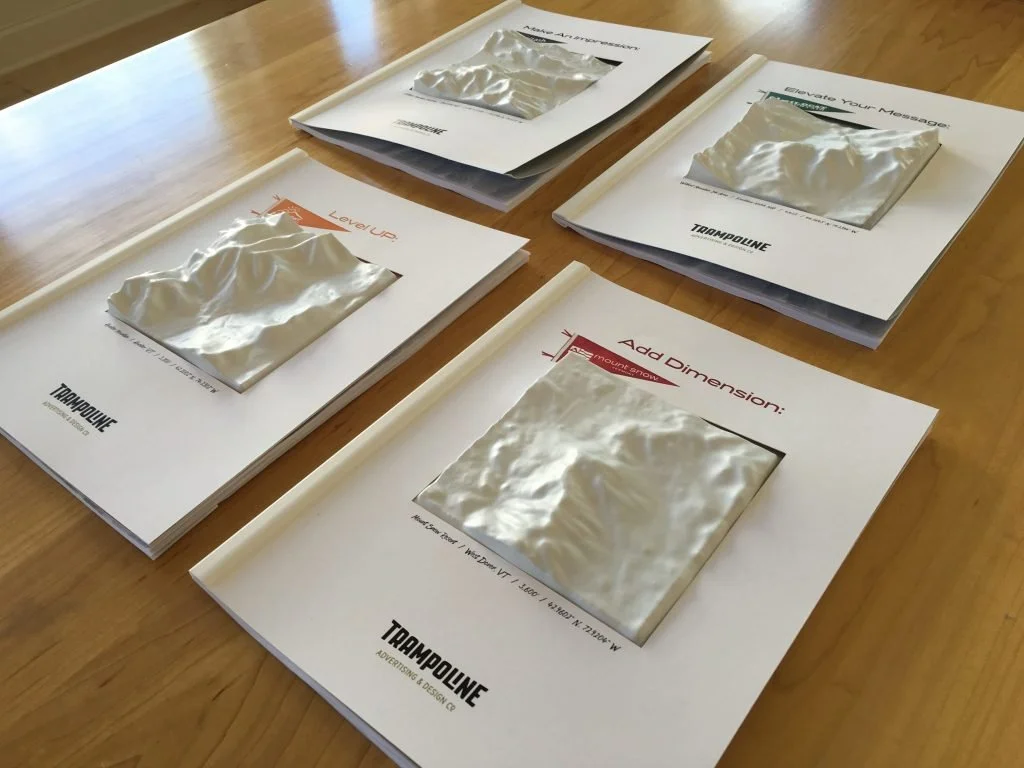Spec: Risk or Flex?
The question about whether to provide spec work on a project is one that our shop has danced around for the last 16 years. In our industry, providing creative work ahead of any contract or agreement to do work isn’t advised. On the client side, spec work is a lot like staying in a nice hotel, trying out the tub, sleeping in the bed and ordering room service without ever paying the bill. One might enjoy the experience and decide to book/pay for a room. Then again, maybe not. This isn’t to say that clients don’t ask for spec. They do. Often, it’s a requirement on larger proposals. Organizations are in search of a guarantee that their investment will provide a valuable return.
👎 Design Contests
We learned early on that attempts to skirt payment for design or concept work are nonsense. Business relationships need to be built on a respect for time and an appreciation of services rendered. It’s well marked as a two-way street. The value of our work can’t be reduced to tournament brackets, and someone who would underrate communication that way, probably isn’t all that bright to begin with. Read: you get what you pay for.
👍 Loss Leaders
At Trampoline we have found that, while risky, providing spec allows us to flex our creative muscles, often pushing our proposal to the top of the pile. There’s a risk that we could provide something in a color palette that the customer ultimately can’t stand or a style that they don’t usually go for. Our hope is that our work is creative enough that it elicits a response—negative or positive—that will begin a conversation. See the pitch video posted to the Trampoline Facebook page, misinterpreted as an actual social promo for the City of Oneonta. 677 likes, 211 comments and over 2,000 shares later, conversation was had.
☝️Proof of Results
In addition to those instances where spec is required we’ve also found opportunities to leverage our work ahead of contract negotiations. This is always done in an effort to show a prospective client the entire scope they can expect when contracting Trampoline. Tailoring work to them shows that we understand their brand.
👋 An Introduction
Sometimes spec is simply agreeing to work on projects before there is a long-term contract in place.Identifying a set scope of work, or a trial job can be a low-stakes way to build a working relationship between agency and client. Those organizations often stay with us the longest.
👊 Client Singular
Creating content for use as a competitive advantage should clearly showcase ability, demonstrate research, and prove a result. The work, speculative as it might be, needs to be specific—or what’s the point? It’s safest to stick to the facts and leave opinions out.In our experience, if someone wants advice, they’ll request it specifically. Without that engagement any viewpoint is just more noise added to the internet. Take this blog post, for example: if you’re still reading it, then you must be getting something. Communication should be focused on the message, not who is delivering it. Talking heads serving up a self-promo gazpacho of marketspeak are not specific (they can't be) and full of rhetoric (that they need to resort to).
👌 Worthwhile
Ultimately it comes down to being flexible and weighing the pros and cons. We don’t believe that there is any single answer that works for every situation. Like any agency we compete for marketshare, sometimes that means taking a risk to demonstrate your worth.
 .sqs-block-summary-v2 {
.summary-title-link,
.summary-heading {
font-family: archivo black;
font-weight: 400;
font-size: 2rem !important;
color: ffffff;
} }
.sqs-block-summary-v2 {
.summary-title-link,
.summary-heading {
font-family: archivo black;
font-weight: 400;
font-size: 2rem !important;
color: ffffff;
} }


